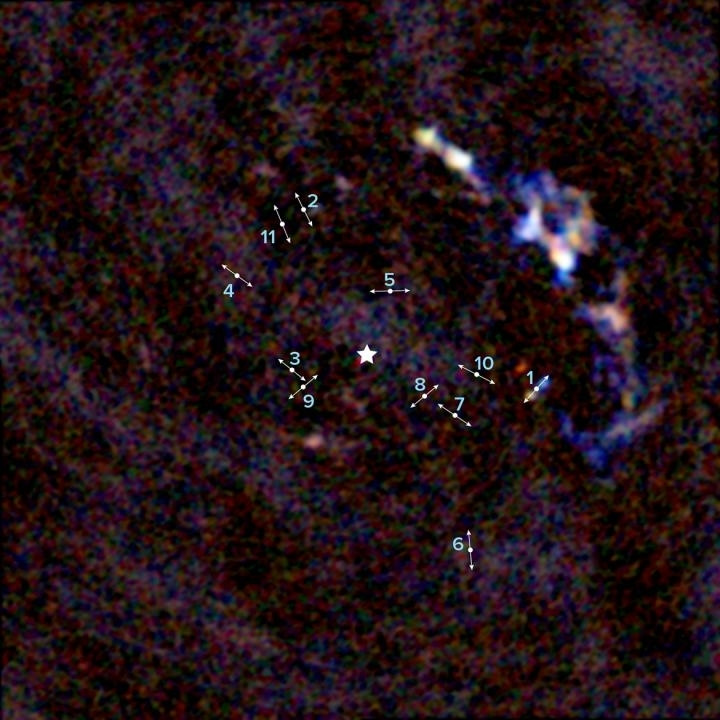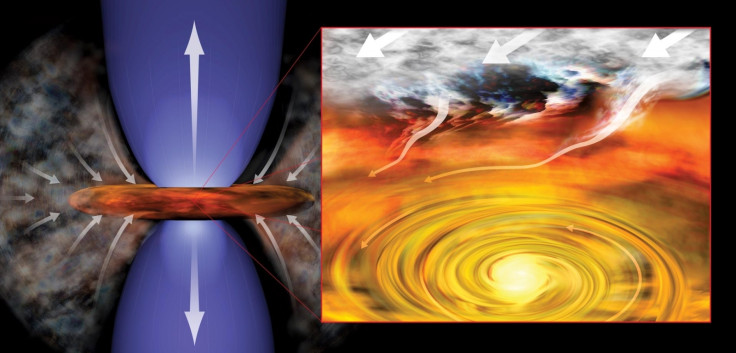These stars are defying the gravity pull of Milky Way's supermassive black hole and no one knows why
Milky Way's central supermassive black hole has young stars lurking close by.

Some 26,000 light-years away, the centre of our galaxy features a supermassive black hole.
Anything in the vicinity of this black hole is expected to be ripped away by the harsh conditions it creates, but surprisingly, researchers have observed the presence of young stars located eerily close – just three light-years away.
Using the Atacama Large Millimeter/submillimeter Array, or the Alma telescope, the researchers spotted signs of as many as 11 low-mass stars forming near supermassive black hole Sagittarius A*, according to a release from the National Radio Astronomy Observatory.
These early-stage stars or protostars are nearly 6,000 years old and are in the formative stage – a phase in which they are more than a dense cloud of gas but are yet to transform into a shining, young star.
Stars form within collapsing fragments of gas clouds, according to Nasa. As the clouds contract under the force of their own gravity, their central region continues to become denser and hotter. By the end of this process, the collapsing fragments transform into hot protostars surrounded by disks of gas and dust.
Normally, protostars evolve further into stars, but in this case, the young stars shouldn't have even existed -- due to the black hole. At such close distance, the tidal forces, ultraviolet light, and X-ray radiation driven by the four million solar mass black hole should've blasted away the clouds of gas well before this process started.
Extremely turbulent environments and intense radiation from black holes like this are capable of disrupting the star formation process. But, the presence of these infant stars suggests that the conditions required for star formation may exist even in some of the most hostile regions of our galaxy and universe.
"Despite all odds, we see the best evidence yet that low-mass stars are forming startlingly close to the supermassive black hole at the centre of the Milky Way," says Farhad Yusef-Zadeh, lead author of the paper published in Astrophysical Journal Letters.
"This is a genuinely surprising result and one that demonstrates just how robust star formation can be, even in the most unlikely of places."
The researchers identified these protostars by seeing "double lobes" of material around each of them. These hourglass-like shapes signal the early stages of star formation and carry molecules like carbon monoxide which glow brightly in millimeter-wavelength light -- something which Alma can detect with extreme precision and sensitivity.
It is still unclear how these stars are forming, but astronomers speculate that outside forces like high-velocity gas clouds or jets from the black hole itself could have helped in overcoming the violent nature of the region and triggering the star formation.
"Though these conditions are far from ideal, we can envision several pathways for these stars to emerge," says Al Wootten, the co-author of the paper.
"The next step is to take a closer look to confirm that these newly formed stars are orbited by disks of dusty gas," concluded Mark Wardle, an astronomer at Macquarie University in Sydney, Australia, and co-investigator on the team. "If so, it's likely that planets will eventually form from this material, as is the case for young stars in the galactic disk."






















